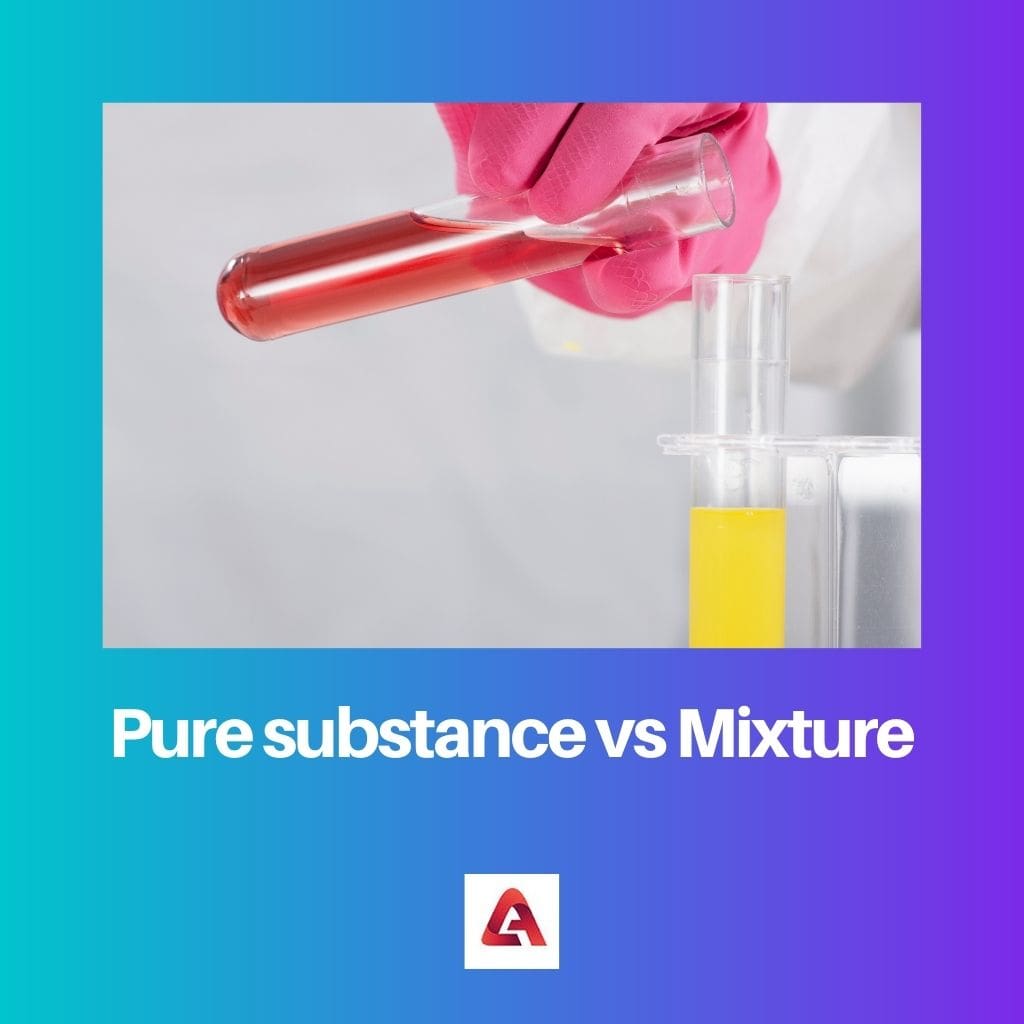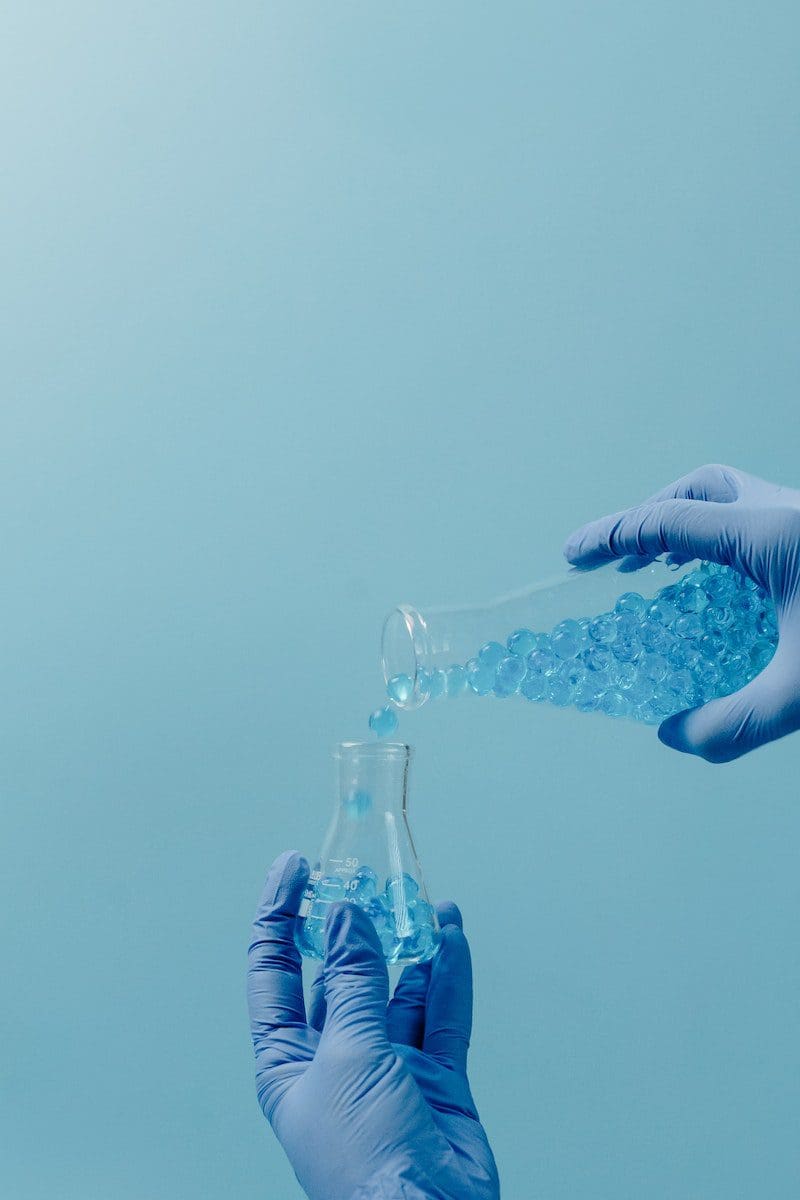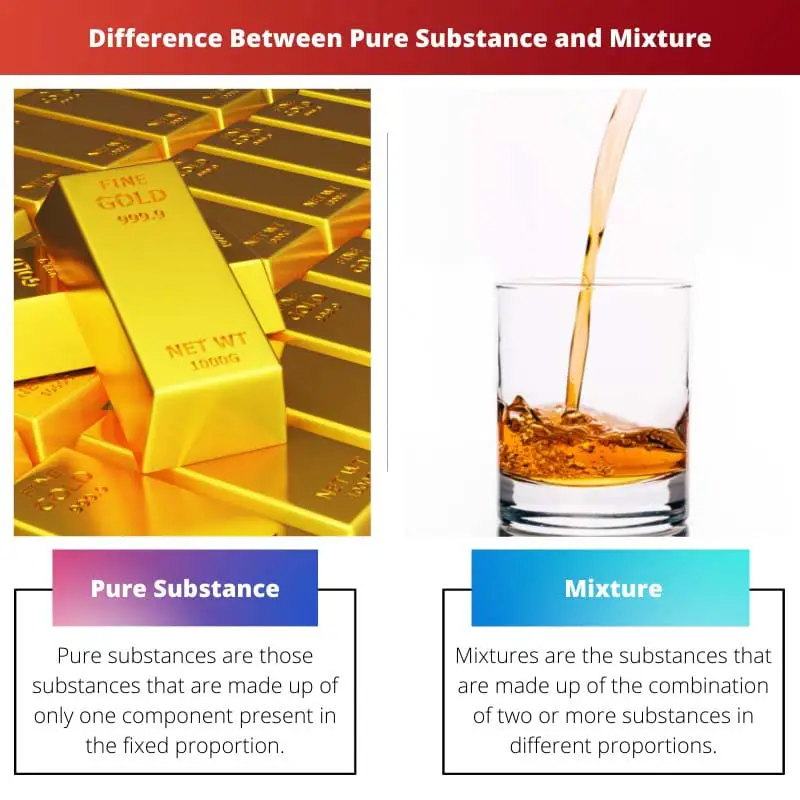When we look at the things around us, such as water, beverages, oil, food, etc., we always wonder what they are constituted with. All the substances around us can be broadly divided into two main categories: pure substances and mixtures.
Key Takeaways
- A pure substance is a matter with a fixed composition and uniform properties, consisting of a single element or compound.
- A mixture consists of two or more substances combined without any chemical reaction, maintaining their individual properties and able to be separated through physical means.
- Distinguishing between pure substances and mixtures is crucial in chemistry and material science for accurate classification, analysis, and understanding of various forms of matter.
Pure Substance vs. Mixture
Pure substance is a type of matter that is composed of only one type of atom or molecule. These substances are characterized by their homogeneity and uniformity. Mixture is a combination of two or more substances that are physically combined and/or mixed, but not chemically bonded.

Pure substances are substances made up of similar particles and cannot be broken down further into different substances with physical or chemical processes.
Mixtures are substances made up of combining two or more substances that physical and chemical processes can separate.
Some examples of pure substances can be pure water, gold, platinum, etc., whereas some examples of mixtures can be carbon dioxide gas, sugar, alcohol, etc.
Comparison Table
| Parameters of comparison | Pure Substance | Mixture |
|---|---|---|
| Definition | Pure substances are those made up of only one component in a fixed proportion. | Mixtures are substances made up of combining two or more substances in different proportions. |
| Properties | The chemical and physical properties of the pure substances remain the same throughout. | The chemical and physical properties vary due to more than one compound. |
| Categories | Pure substances can be categorized as solids, liquids, or gases. | The mixtures are broadly divided into homogeneous and heterogeneous mixtures. |
| Melting and Boiling Points | The pure substances’ melting and boiling points remain the same because of the one component. | The melting and boiling points of the mixtures depend on the presence of the different compounds. |
| Examples | Examples of pure substances include H2 gas, oxygen gas, gold, purified water, etc. | Examples of the mixture include sugar, sand, alcohol, ammonia, etc. |
What is Pure Substance?
A pure substance is a substance that comprises only one kind of component present in the ideal ratio. Any physical or chemical processes cannot separate these components.
The color, texture, and size of all the components present in the substance are the same.
These substances can be categorized into solids, liquids, and gases depending on the nature of the particles present.
The melting and boiling points of these substances remain the same throughout because all the constituent particles have similar properties.
Elements and molecules are pure substances because they are identical particles. Some examples of elements are gold, silver, etc., and molecules are H2 (Helium gas), O2 (oxygen gas), etc.
Some of the properties of the pure substance are listed below;
- They are made up of similar kinds of particles present in the fixed ratio.
- They have consistent melting and boiling points.
- The conductivity of such particles depends on their purity.

What is Mixture?
A mixture combines two or more substances present in different ratios. These substances are not bonded chemically and never show similar chemical and physical properties.
Such substances are called impure substances because of the presence of different particles.
Various physical and chemical processes separate the components in the mixtures. Some of the separation methods are filtration, sedimentation, distillation, centrifugation, etc.
The melting point and the boiling point of the mixture are different depending on the particles present in it. Some examples of the mix are – cold drinks, alcohol, sand, water, sugar, etc.
Mixtures can further be divided into homogeneous and heterogeneous mixtures. This is depicted as follows:
- Homogeneous Mixture: It is a type of mixture where the particles are uniform and not visible to the naked eye. Example- salt and water solution
- Heterogeneous Mixture: The type of mixture where the particles are not present in a uniform composition and are visible through the naked eye. For example- different nuts are put together in a bowl.

Main Differences Between Pure Substance and Mixture
- A pure substance is a substance made up of one component, whereas a mixture is a substance made up of combining two or more elements.
- The chemical and physical properties of the pure substance remain the same throughout, but they change in a mixture.
- The components of the pure substance can’t be separated by the physical and the chemical processes because they are bound chemically, whereas components of a mixture can be separated.
- The melting and boiling points of the pure substance do not change but vary in a mixture.
- A pure substance can be differentiated as solids, liquids, and gases, whereas a mixture can be homogeneous or heterogeneous.

- https://pubs.acs.org/doi/abs/10.1021/acs.iecr.7b04871
- https://aip.scitation.org/doi/abs/10.1063/1.475699

I think the article does a great job of emphasizing the significance of distinguishing pure substances from mixtures in chemistry. It’s essential for accurate classification and analysis of matter.
The examples given really solidify the understanding of pure substances and mixtures. Great illustration of concepts.
Definitely, this distinction forms the basis of understanding the nature of different substances.
The detailed comparison between pure substances and mixtures is very informative. I was unaware of the fact that the melting and boiling points of pure substances remain the same.
Yes, this article provides a comprehensive understanding of the concepts. It really broadened my knowledge about pure substances and mixtures.
Agreed, the clarity and examples make it easier to comprehend.
The detailed comparison is quite fascinating and well-articulated. It’s a great insight into the world of chemistry and material science.
Absolutely, this article serves as a valuable resource for academic and scientific purposes.
The detailed explanations of pure substances and mixtures are presented in a very logical and organized manner. I appreciate how this article highlights the key takeaways.
Exactly, the key differences are clearly outlined and easy to grasp.
Absolutely, the content is quite engaging and intellectually stimulating.
This article certainly elevates the understanding of pure substances and mixtures. It’s quite enlightening and offers valuable insights.
I found the comparison between pure substances and mixtures quite thought-provoking. It’s an excellent read for those interested in chemistry and material science.
Absolutely, the content is intellectually enriching and academically profound.
The examples of pure substances and mixtures are very well-chosen. The article is both educational and engaging.
Absolutely, it’s remarkable how this article simplifies complex concepts and makes them accessible to a wider audience.
The scientific explanations and examples provided here are truly enlightening. It brings about a deeper understanding of the topic.
The explanation of homogeneous and heterogeneous mixtures is quite insightful. It helps in understanding how components in a mixture can be visually identified.
I found the examples of homogeneous and heterogeneous mixtures to be very practical. It brings more clarity to the topic.
Absolutely, knowing the difference between these two types of mixtures is crucial for various scientific processes.
The comparison table is a great way to summarize the key differences between pure substances and mixtures. It’s very well-structured and easy to follow.